There is perhaps no better place in the world to bring together opera and wine than Verona, Italy. Opera was born in Italy and Verona hosts one of the world’s most famous opera festivals in its magnificent Roman Arena. The region also produces one of Italy’s most celebrated red wines, Amarone. It was only fitting that on February 3rd, the Valpolicella Wine Consortium celebrated the 20th anniversary of Amarone Opera Prima with a moving performance from the world-renowned tenor, Vittorio Grigolo. Since he was a child Griglio sang as a soloist in the Sistine Chapel and quickly became one of the youngest, most talented opera singers on the world stage, and the local star of the Arena Opera Festival since 2013.
The whole Amarone Opera Prima event took place over three days with 70 participating producers and was set in the 17th century Gran Guardia building on the Piazza Brà in the heart of Verona. The Consortium’s President Christian Marchesini announced in his keynote speech that the theme of the event would be focused on the future of Valpolicella within the current global market and with regards to consumer preferences which have shifted significantly over the past few years. As global demand has stagnated or shrunk in most international markets, it’s clear the region is being put to the test.
Master of Wine and the consortium’s vice-president, Andrea Lonardi, explained that past Amarone production was oriented towards a market demand for silky smooth reds that were warming, easy to drink and could be made in high quantities. Now that market is shrinking and so there is a need for a stylistic change and the ability to reorient these wines to different markets. The modern consumer is increasingly looking for fine wines with a deeper connection to their territory of origin and a distinct identity that can be easily communicated and understood.
He went on to suggest that the region’s focus needs to be one of synergy between method, territory, producers, and messaging. A shift from volume to value requires change on several levels whether those be cultural, legislative, or related to production.
Overall, the consortium assessed Valpolicella’s 2019 Amarone vintage to be 5-star quality, thanks to its intense aromatics and balanced profile that truly represents the key characteristics of the appellation in a balanced, modern way.
So, what is the true identity of Valpolicella?
The unique qualities of this region lie in its rich winemaking history combined with a variety of picturesque landscapes and soil types. Its rolling hills are nestled against the Dolomite mountains and Lake Garda. Vineyards are protected to the north by the Monti Lessini plateau which shields against the cold currents from the Alps. Thanks to Lake Garda to the west, they also benefit from milder winters and good ventilation. A longer growing season helps produce wines with good concentration and high acidity. For centuries these ideal conditions have attracted winemakers who developed the traditional method of ‘appassimento’, or drying of grapes, to produce a unique style of wine famously known as Amarone which has become the flagship wine of the region. This long-standing tradition of Amarone and special grape drying techniques used to make it are a fundamental part of the region’s identity.
The classification of wines in the Valpolicella region can seem complex at first because there are both wine styles and wine territories with similar names. The region produces four traditional wines: Amarone della Valpolicella DOCG, Valpolicella DOC, Valpolicella Ripasso DOC and Recioto della Valpolicella DOCG. These are classified according to how the wine is made. Then all four of these wines can come from three distinct territories within the Valpolicella region: Valpolicella DOC, Valpolicella DOC Classico and Valpolicella DOC Valpatena.
Experiencing Valpolicella
Valpolicella’s picturesque vineyards attract wine enthusiasts, foodies, and nature lovers alike. Guided tours take visitors through the charming countryside, offering breathtaking views of rolling hills, terraced vineyards, and ancient olive groves. The countryside is dotted with charming historic villages that provide a glimpse into the region’s cultural and architectural heritage. One such village is San Giorgio di Valpolicella, where visitors can admire the 12th-century Romanesque church and explore the narrow streets lined with traditional houses. The town of Fumane boasts the historic Maso degli Orzi, a beautifully preserved rural complex that offers a captivating glimpse into rural life in the area. The hilltop village of San Pietro in Cariano is crowned by the enchanting Villa Serego Alighieri, a gracious Renaissance villa that serves as a winery and museum.
Verona is an ideal starting point for day trips out to some of Valpolicella’s best producers, but it is also worth spending time in the city to discover its cultural and historical highlights. Also classified as a UNESCO World Heritage Site, Verona is renowned for its ancient architecture, rich culture, and romantic ambience. Visitors can explore the well-preserved Arena di Verona, an imposing amphitheater dating back to the Roman era, take a walk to Juliet’s House, the enchanting landmark that inspired Shakespeare’s Romeo and Juliet, and then on to the beautiful Piazza delle Erbe, the vibrant heart of the city and home to historic buildings, cafes, and markets.
If it is natural beauty and outdoor activities you’re looking for, Lake Garda is just an hour to the east. As Italy’s largest lake, Garda offers stunning landscapes with lakeside villages and historical landmarks surrounded by mountains. The lake provides plenty of adventurous activities like windsurfing, kite surfing, stand-up paddleboarding, and parasailing.

Of course, Valpolicella is not only famous for its wines but also for its delectable gastronomy. Local restaurants and trattorias delight visitors with traditional dishes featuring the rich flavors of the region. Popular culinary delights include hearty pasta dishes like “bigoli” with duck ragu and “paparotte” (cabbage and beans soup), along with succulent cuts of grilled or stewed meats. These flavorsome dishes perfectly complement the robust Valpolicella wines and create a memorable dining experience.
My choices of Valpolicella’s producers
Below are a few notable producers that caught my eye, and palate, during this year’s Amarone Opera Prima event. They range from historic estates to new state-of-the-art wineries and small, passionate producers focused on terroir and sustainability:
Bertani – www.bertani.net
Bertani has a rich and fascinating history. The Bertani brothers founded their winery just a few years before the unification of Italy. One of them, Gaetano, studied in Burgundy with none other than Jules Guyot. He returned home to the heart of Valpolicella applying what he learned and quickly Bertani wines gained recognition. Soon their wines were being served at the royal court in both Italy and England. As they expanded their vineyards and production, Bertani became a historical reference for the region and is now the only winery in Valpolicella that still releases its old vintages dating back to the 1960’s.
Amarone della Valpolicella DOCG Valpantena 2019
Deep ruby core, paler on the hedge. The nose shows beautiful aromas of plum and blackcurrant with notes of rhubarb and liquorice. The palate is balanced, the acidity matches well with soft tannins and with the alcohol. Harmonious structure with long finish – a beautiful wine.
Gerardo Cesari – www.cesari.it
Founded in 1936 by Gerardo Cesari, the winery was one of the first in Italy to export to all five continents, making Cesari a global name in Amarone. Their wines are known for their authentic, regional character and a tradition of excellence. They have two wineries near Verona. Their historical first winery, Fumane, is used for the grape drying process as well as the pressing, fermentation and a first refining of the wines. Their new facility in Cavaion Veronese is used for the production, bottling and barrel aging of their fine wines. They offer guided visits of their vineyards and barrel rooms followed by several tasting options paired with food upon request.
Amarone della Valpolicella DOCG Classico 2019
Intense ruby red colour with paler reflections. Attractive bouquet of strawberry and violet mixed with spicy notes of black pepper. Full body with lots of red fruit in the center palate with smoky scents on the back. Sweet, tannins and quite long aftertaste – A harmonious wine.
La Collina dei Ciliegi – www.lacollinadeiciliegi.it
The charming Collina dei Ciliegi is nestled in the hills of the Valpantena territory. It is the dream of winemaker Massimo Gianolli who got his start in 2005 with a small production of grapes that would become the first Amarone produced in the small village of Erbin. Now La Collina dei Cilliegi produces 3 collections (Classic, Riserve and Emporium) that are exported to over 20 countries worldwide. They have some of the highest vineyards in Valpolicella (750m) and with their chalky soils produce wines with excellent acidity and minerality. Their modern approach includes new blends that combine traditional and international varieties.
A visit to the winery takes you on a memorable journey of the land, culture and flavors of Valpantena. Their beautifully restored farmhouse Ca’ Del Moro welcomes visitors for tastings, vineyard walks and fine dining along with 6 finely refurbished rooms each named after symbolic wines of the region (Amarone, Valpolicella, Recioto, Ripasso, Garganega and Corvina).
Amarone della Valpolicella DOCG 2019
Deep garnet core, paler towards the edge. The wine displays intense flavour of cherry, balsamic overtones and light earthy notes. A dry, full body wine with good acidity, well balanced structure and firm tannins. Elegant finish. Great potential for aging.
Contrada Palui – www.contradapalui.com
A relatively new producer, Contrada Palui was created by the innovative and passionate Hannes Pichler. After studying renewable energies in London and Milan, Hannes found a naturally organic green meadow in the Valpolicella region just northeast of Verona which had never seen pesticides and planted a vineyard there. The unique location benefits from 500 meters elevation and 180 degrees of sun exposure. The soil composition is that of clay and limestone with flint and black basalt. This combination of soils and location allows Hannes to produce very terroir driven wines. He converted an old hay barn to store his barrels and amphorae.
Amarone della Valpolicella DOCG 2019
Brilliant and clean. It shows a lovely bouquet of ripe plum, violet and chocolate with a hint of tobacco. The palate expresses ripe cherry, blackberries with a hint of spiciness. Good acidity, soft tannins and medium finish.
Massimago – www.massimago.com
Hidden in the valley of Mezzane in Valpolicella is the Massimago winery which dates back to 1883. The name comes from latin meaning “maximum wellness” and that is certainly what they have created here. Current owner and winemaker Camilla Rossi Chauvenet renovated the entire estate in 2003 expanding their cellars and creating a Wine Relais with 7 elegant country-style suites, a pool, private spa and restaurant serving dishes created from ingredients grown on the property. Visitors can enjoy a variety of tasting experiences from a vineyard walk to a picnic or e-bike tour.
Amarone della Valpolicella DOCG 2019 Conte Gastone
Bright with a deep ruby core. Pronounced flavour of ripe plum with scents of new leather. Good structure with medium-plus acidity, medium alcohol and leathery overtones. Velvety tannins, well integrated with the fruit – a great wine.
Novaia – www.novaia.it
On the top of a gentle hill overlooking Marano Valley in Valpolicella Classica sits a 15th century manor, home to Novaia winery. The name means “new farmyard”, a place where the Vaona family settled in the 1800’s to cultivate vines, olives, cherries, corn and silkworms. Here they found an ideal location with the right topography, soil, water and climate for growing grapes and the subsequent grape-drying process. Their vineyards are divided into three different ‘Cru’. The family offers visitors a ‘Woods and Wine Tour’ which consists of a guided walk among the olive groves, forest and vineyards followed by a tour of the ancient cellar and a tasting of their wines and olive oil.
Amarone della Valpolicella DOCG Classico 2019 Corte Vaona
Bright core it shows expressive flavour of strawberry, blueberries, and violet mixed with scents of rhubarb and mint. Full bodied with rich fruit, well balanced with firm tannins with long finish – A lovely wine.
Terre di Leone – www.terredileone.it
Another relatively young producer, Terre di Leone is a small, family run production that has made a name for itself in a short amount of time. They cultivate 10 hectares of vineyards at 400 meters elevation. Owned by the couple Chiara Turati and Federico Pellizzari, they give meticulous attention to their vineyards which they have trained with the guyot system. Their plantings are very dense to ensure small yields of excellent quality.
Amarone della Valpolicella DOCG Classico 2019 Il Re Pazzo
Brillant, ruby red with compacted rim. Pronounced flavour of cassis and violet. Spicy with overtones of leather. Present delicate tannins and quite long aftertaste -mA great wine.
Tenuta Villa Bellini – www.tenutavillabellini.com
A historic producer with a château-like estate whose roots date back to the 15th century. They were the first organic certified winery in the region and pioneered wild yeast fermentation in the early 90’s which was not a favored practice at the time. Their vineyards hold an impressive amount of old vines, some already reaching 200 years old, and all of which are cultivated according to organic and biodynamic principles.
Amarone della Valpolicella DOCG Classico 2019 Centenarie
The colour is intense ruby with a compact rim. Intense bouquet of black cherry and prune with a note of rhubarb. A full body wine with good freshness. Dry and fragrant, with a long persistence. Harmonious finish.
ZYME’ – www.zyme.it
Last but certainly not least is Zýmē, a state of the art winery ingeniously built on a 15th century sandstone quarry in the heart of Valpolicella Classica. The owner and winemaker, Celestino Gaspari, grew up in the fields outside of Verona and was deeply influenced by the soil and seasons. In his 20’s he studied with renowned winemaker Giuseppe Quintarelli and through much hard work developed his own personal vision of the winegrower’s profession. In 1999 he was ready to build his own winery that represented a synergy between tradition and innovation, man and nature. His wines are meant to be transparent to all, so that those who drink it can “read in every sip” his connection with the land.
Amarone della Valpolicella DOCG Classico 2019
Colour ranging from ruby core to light garnet rim. Complex nose with flavour of dark cherry and prune. Vibrant, fresh palate with velvety tannins well matched with a lovely fruit and a lively acidity. Silky tannins and fresh finish. Outstanding wine.


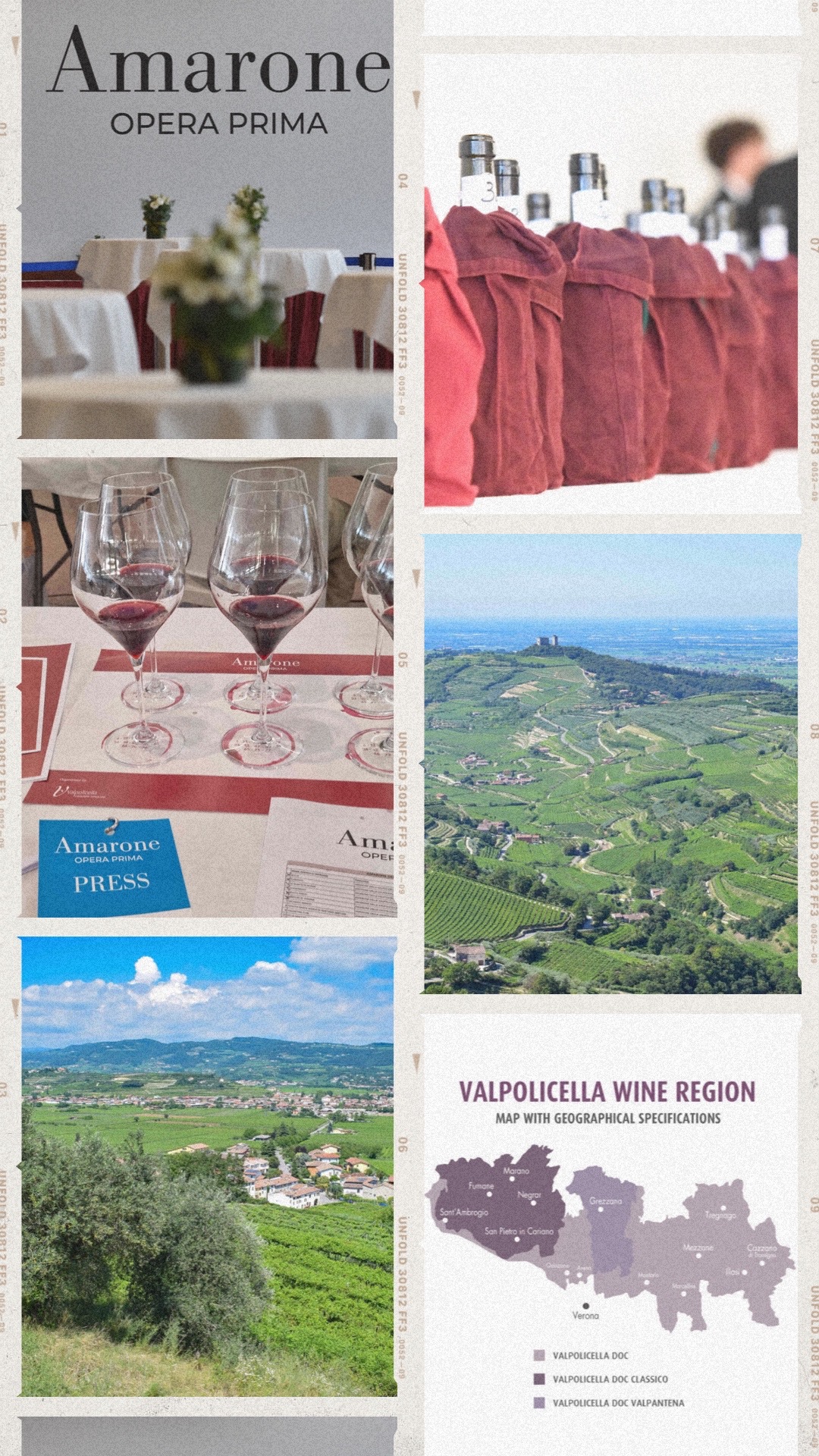
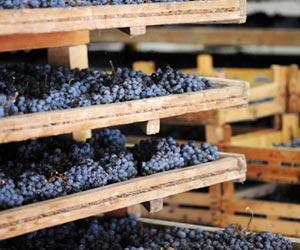
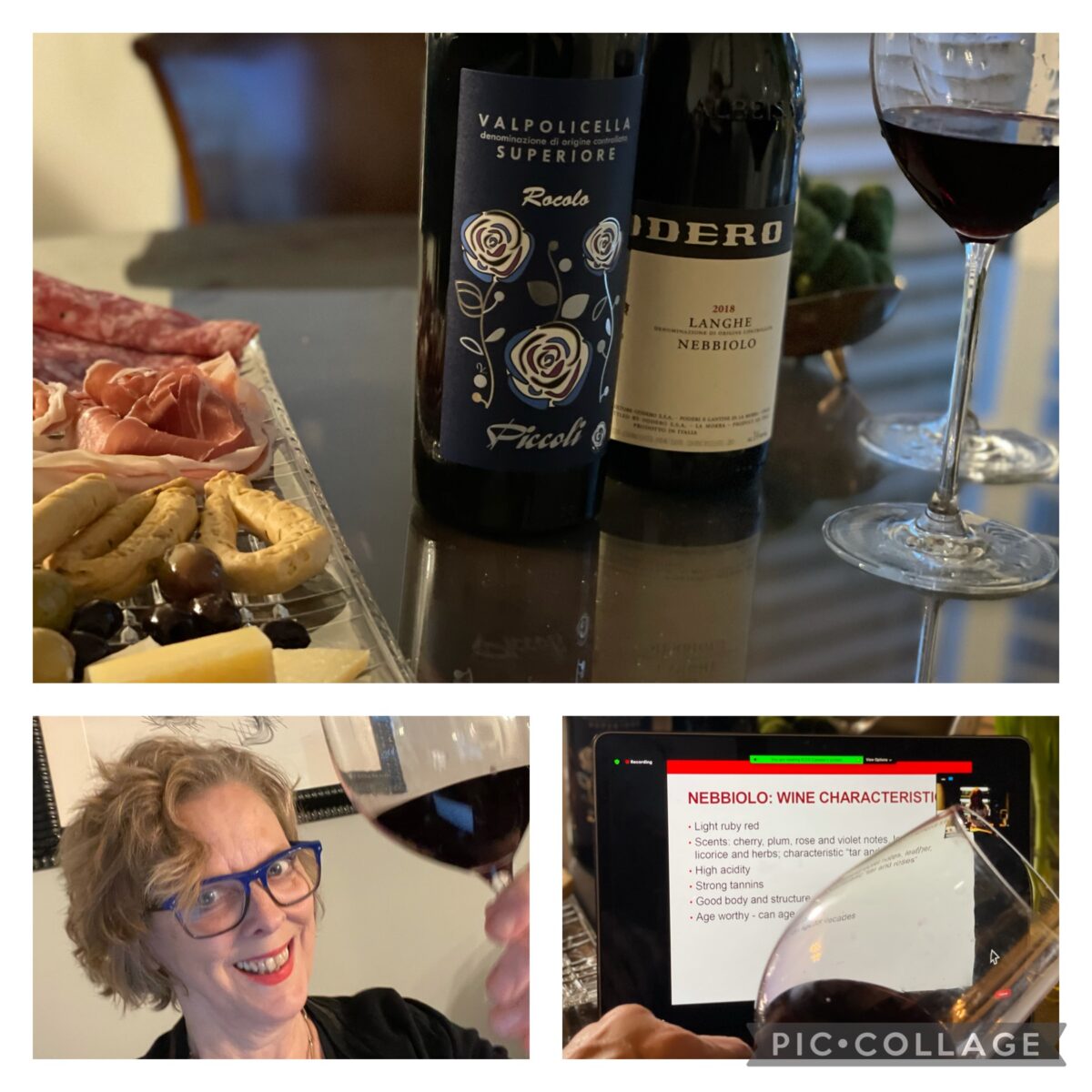
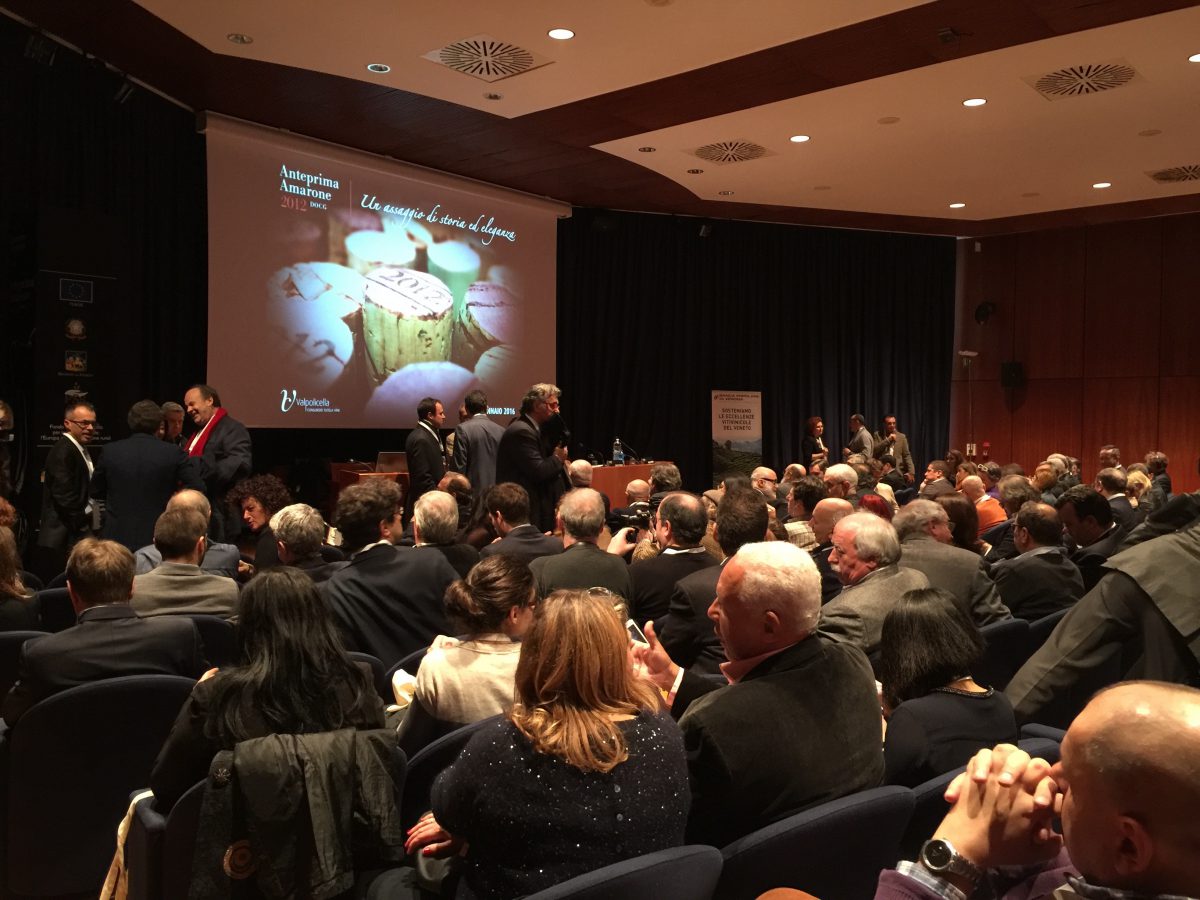
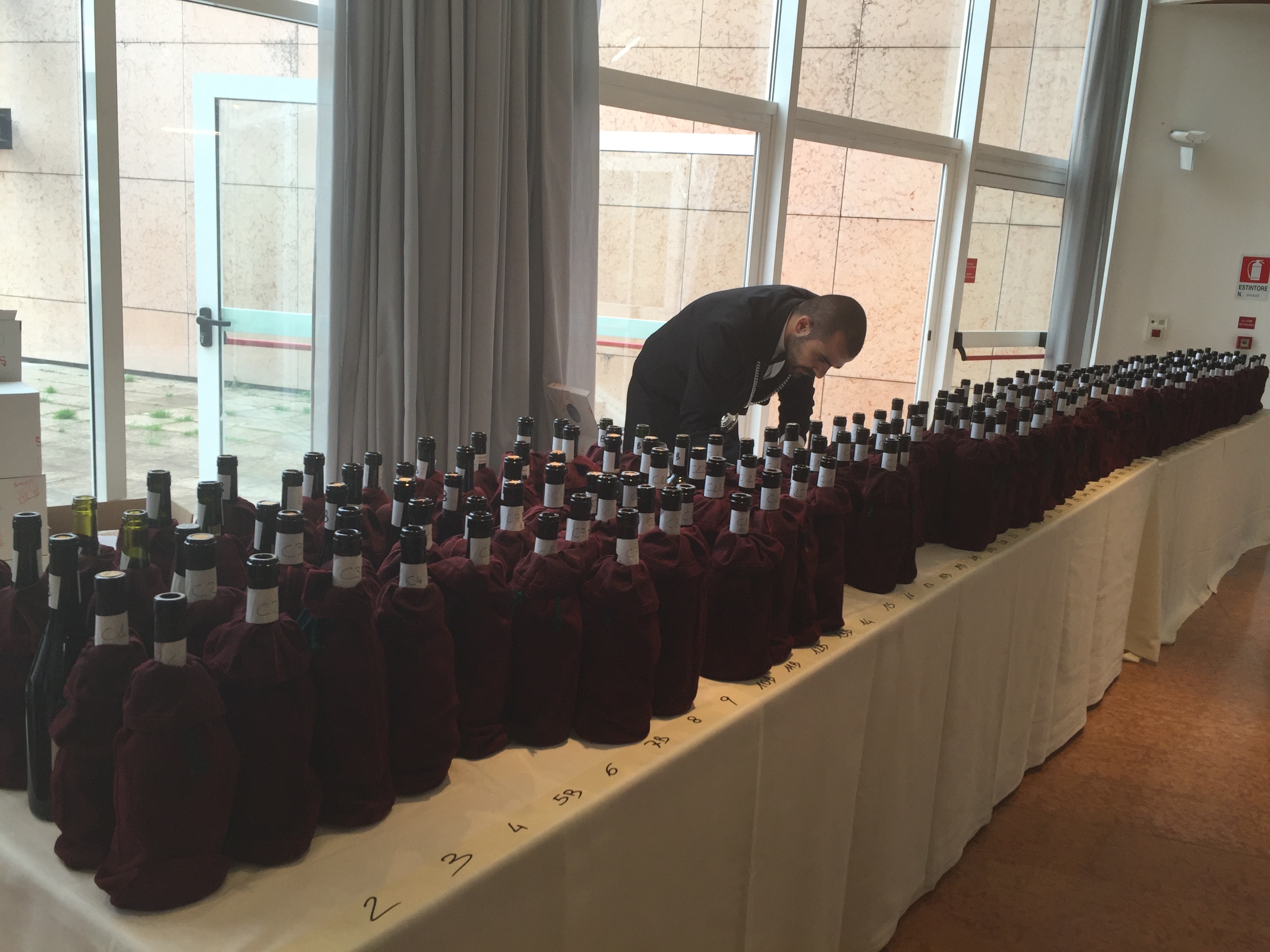 The 13th Edition of Anteprima Amarone was held in Verona on January 30 and 31st when 74 producers revealed their wines from the 2012 harvest to international press, industry insiders and general public.
The 13th Edition of Anteprima Amarone was held in Verona on January 30 and 31st when 74 producers revealed their wines from the 2012 harvest to international press, industry insiders and general public.